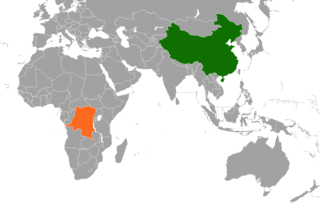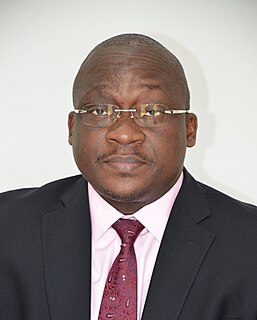Related Research Articles

The economy of Nicaragua is focused primarily on the agricultural sector. Nicaragua itself is the least developed country in Central America, and the second poorest in the Americas by nominal GDP. In recent years, under the administrations of Daniel Ortega, the Nicaraguan economy has expanded somewhat, following the Great Recession, when the country's economy actually contracted by 1.5%, due to decreased export demand in the American and Central American markets, lower commodity prices for key agricultural exports, and low remittance growth. The economy saw 4.5% growth in 2010 thanks to a recovery in export demand and growth in its tourism industry. Nicaragua's economy continues to post growth, with preliminary indicators showing the Nicaraguan economy growing an additional 5% in 2011. Consumer Price inflation have also curtailed since 2008, when Nicaragua's inflation rate hovered at 19.82%. In 2009 and 2010, the country posted lower inflation rates, 3.68% and 5.45%, respectively. Remittances are a major source of income, equivalent to 15% of the country's GDP, which originate primarily from Costa Rica, the United States, and European Union member states. Approximately one million Nicaraguans contribute to the remittance sector of the economy.

The economy of Niger is based largely on internal markets, subsistence agriculture, and the export of raw commodities: foodstuffs to neighbors and raw minerals to world markets. Niger, a landlocked West African nation that straddles the Sahel, has consistently been ranked on the bottom of the Human development index, with a relatively low GDP and per capita income, and ranks among the least developed and most heavily indebted countries in the world, despite having large raw commodities and a relatively stable government and society not currently affected by civil war or terrorism. Economic activity centers on subsistence agriculture, animal husbandry, re-export trade, and export of uranium.

The economy of Tanzania is a lower-middle income economy that is overwhelmingly dependent on agriculture. Tanzania's economy has been transitioning from a command economy to a market economy since 1985. Although total GDP has increased since these reforms began, GDP per capita dropped sharply at first, and only exceeded the pre-transition figure in around 2007.

The International Bank for Reconstruction and Development (IBRD) is an international financial institution, established in 1944 and headquartered in Washington, D.C., United States, that is the lending arm of World Bank Group. The IBRD offers loans to middle-income developing countries. The IBRD is the first of five member institutions that compose the World Bank Group. The initial mission of the IBRD in 1944, was to finance the reconstruction of European nations devastated by World War II. The IBRD and its concessional lending arm, the International Development Association (IDA), are collectively known as the World Bank as they share the same leadership and staff.

The economy of Guyana is the fastest growing in the world with a projected GDP growth of 26.2% in 2020. Guyana had a per capita gross domestic product of $8,300 in 2016 and an average GDP growth of 4.2% over the previous decade. Crude oil production started in 2019.
Debt relief or debt cancellation is the partial or total forgiveness of debt, or the slowing or stopping of debt growth, owed by individuals, corporations, or nations.

The heavily indebted poor countries (HIPC) are a group of 39 developing countries with high levels of poverty and debt overhang which are eligible for special assistance from the International Monetary Fund (IMF) and the World Bank.
The debt of developing countries usually refers to the external debt incurred by governments of developing countries.

The Millennium Development Goals (MDGs) were eight international development goals for the year 2015 that had been established following the Millennium Summit of the United Nations in 2000, following the adoption of the United Nations Millennium Declaration. These were based on the OECD DAC International Development Goals agreed by Development Ministers in the "Shaping the 21st Century Strategy". The Sustainable Development Goals (SDGs) succeeded the MDGs in 2016.

The Paris Club is a group of officials from major creditor countries whose role is to find co-ordinated and sustainable solutions to the payment difficulties experienced by debtor countries. As debtor countries undertake reforms to stabilize and restore their macroeconomic and financial situation, Paris Club creditors provide an appropriate debt treatment.
The Debt Management and Financial Analysis System (DMFAS) Programme is a technical assistance programme managed by the United Nations Conference on Trade and Development (UNCTAD), in Geneva. The objectives of the DMFAS Programme are to assist countries to develop administrative, institutional and legal structures for effective debt management; to provide technical assistance to government offices in charge of debt management; to deploy and advance debt analysis and management systems; and to act as a focal point for discussion and exchange of experiences in debt management. The Programme's debt management software system is currently installed in over ninety government institutions, almost exclusively ministries of finance and/or central banks.

After the Haitians gained independence from French colonial rule in the Haitian Revolution of 1804, the French returned in 1825 and demanded that the newly independent country pay the French government and French slaveholders the modern equivalent of US$21 billion for claiming slaveowner's property and the land that they had turned into profitable sugar and coffee producing plantations. This independence debt was financed by French banks and the American Citibank, and finally paid off in 1947.

The People's Republic of China (PRC) and the Democratic Republic of the Congo (DRC) have had peaceful diplomatic relations, and growing economic relations, since 1971. Relations between the two countries go back to 1887, when representatives of the Congo Free State established contacts with the court of the Qing dynasty then ruling China. The first treaty between the two powers was signed in 1898. The Free State became a Belgian colony in 1908, but when it gained its independence in 1960 it established formal relations with the Republic of China (ROC), which had replaced the Qing in 1912 but was relegated to the island of Taiwan, a former Japanese colony, after 1949. Over the next decade, Congolese recognition was switched several times between the ROC and the PRC before it settled finally on the latter in 1971. At the time, the Congo was known as Zaire. In the 21st century, Chinese investment in the DRC and Congolese exports to China have grown rapidly. The DRC joined the Belt and Road Initiative in 2021.

Henry K. Rotich is a Kenyan civil servant who was nominated by President Uhuru Kenyatta as Cabinet Secretary for the National Treasury on 23 April 2013. On 14 January 2020, Rotich, who had been arrested on charges of corruption, was removed from this position.
After its independence from Portugal in 1975, the Mozambique government established a primary health care system that was cited by the WHO as a model for other developing countries. Over 90% of the population had been provided with vaccination. During the period of the early 1980s, around 11% of the government budget was targeted on health care. The Mozambique civil war led to a great setback in the primary health system in Mozambique. The RENAMO's attack on government infrastructures included health and education systems from 1980 to 1992.

Greylock Capital Management, LLC is a U.S. Securities and Exchange Commission registered alternative investment adviser that invests in undervalued, distressed, and high yield assets worldwide, particularly in emerging and frontier markets. As is the case with comparable funds, the firm's investor base consists largely of institutional investors and a limited number of high net worth individuals. As a group, institutional investors may include banks, credit unions, insurance companies, pension funds, hedge funds, REITs, endowments and mutual funds. As is common with many asset management firms, Greylock Capital is organized across a series of onshore and offshore limited partnerships.

Mohammed Mulibah Sherif is the General Manager of regional transmission company TRANSCO CLSG based in Abidjan, Cote d'Ivoire. He is an economist and project management specialist. He is recognized for his role in Liberia’s debt relief through the Heavily Indebted Poor Countries (HIPC) process and also for helping to stabilize the Liberian economy from the effects of a prolonged civil conflict. He is married with five children.
The International Monetary Fund (IMF) has operated in Malawi since 1965.
The World Bank Group country partnership framework aims to support Haiti's efforts to reduce poverty and provide economic opportunities for all Haitians. The framework aims to strengthen institutions, government capacity, and public financial management as aid and concessional financing rapidly decline.

Bolivia joined the IMF on December 27, 1945. Since 1945, Bolivia has cooperated with the IMF to achieve social reforms and economic growth. These efforts have involved strategies to reduce poverty, increase social equity, improve the education system and healthcare system, and expand social services to rural populations and underserved urban communities. Since 1984, Bolivia has been an active client of the fund, accessing 19 credit lines with the fund since joining.
References
- 1 2 3 4 "The Multilateral Debt Relief Initiative". IMF. IMF. Retrieved 30 March 2017.
- ↑ Braga, Carlos; Dömeland, Dörte, eds. (2009). Debt Relief and beyond: Lessons Learned and Changes Ahead (PDF). Washington, D.C.: World Bank. p. 2. ISBN 978-0-8213-7874-8 . Retrieved 30 March 2017.